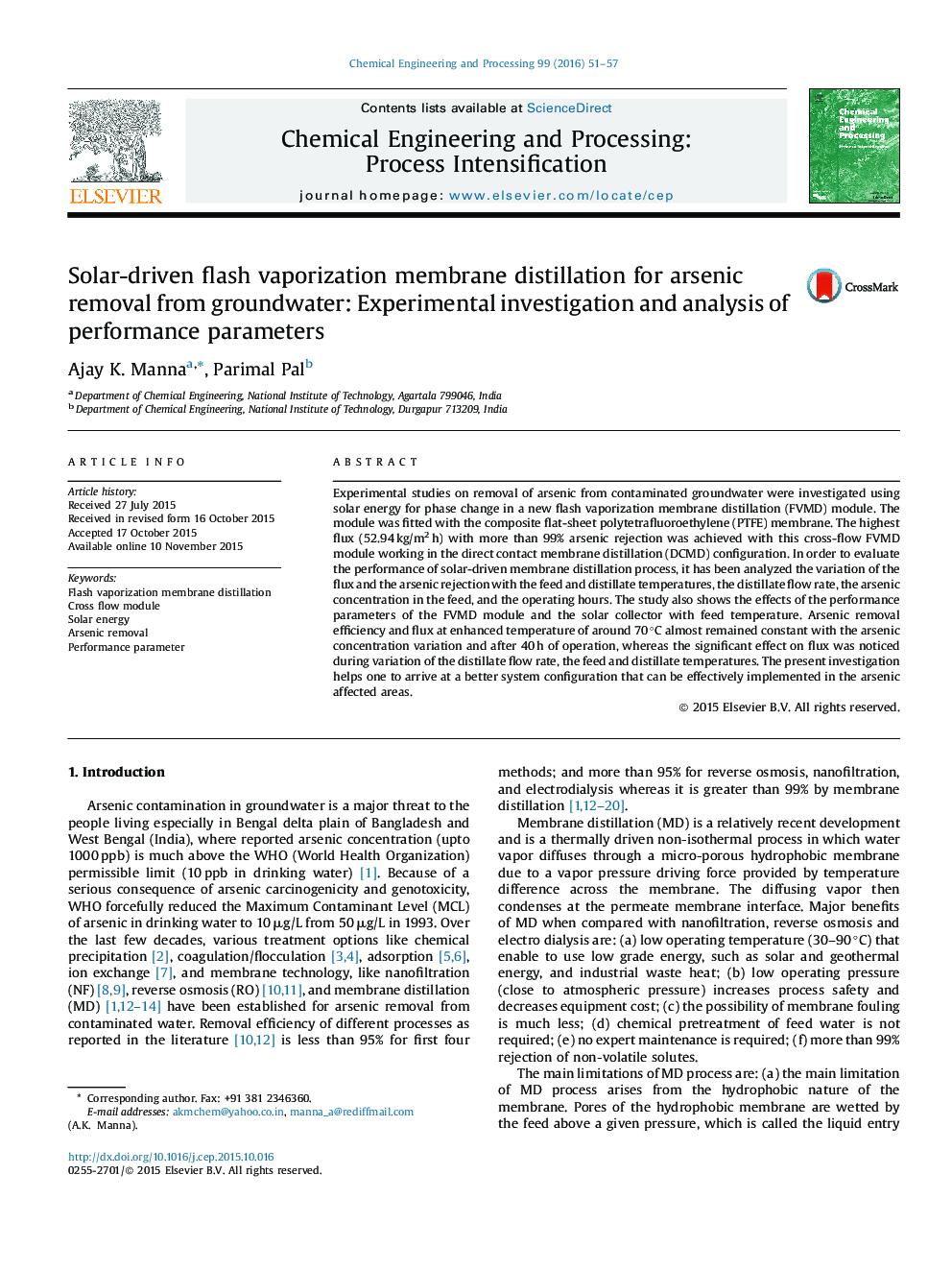| Article ID | Journal | Published Year | Pages | File Type |
|---|---|---|---|---|
| 7089763 | Chemical Engineering and Processing: Process Intensification | 2016 | 7 Pages |
Abstract
Experimental studies on removal of arsenic from contaminated groundwater were investigated using solar energy for phase change in a new flash vaporization membrane distillation (FVMD) module. The module was fitted with the composite flat-sheet polytetrafluoroethylene (PTFE) membrane. The highest flux (52.94 kg/m2 h) with more than 99% arsenic rejection was achieved with this cross-flow FVMD module working in the direct contact membrane distillation (DCMD) configuration. In order to evaluate the performance of solar-driven membrane distillation process, it has been analyzed the variation of the flux and the arsenic rejection with the feed and distillate temperatures, the distillate flow rate, the arsenic concentration in the feed, and the operating hours. The study also shows the effects of the performance parameters of the FVMD module and the solar collector with feed temperature. Arsenic removal efficiency and flux at enhanced temperature of around 70 °C almost remained constant with the arsenic concentration variation and after 40 h of operation, whereas the significant effect on flux was noticed during variation of the distillate flow rate, the feed and distillate temperatures. The present investigation helps one to arrive at a better system configuration that can be effectively implemented in the arsenic affected areas.
Related Topics
Physical Sciences and Engineering
Chemical Engineering
Process Chemistry and Technology
Authors
Ajay K. Manna, Parimal Pal,
